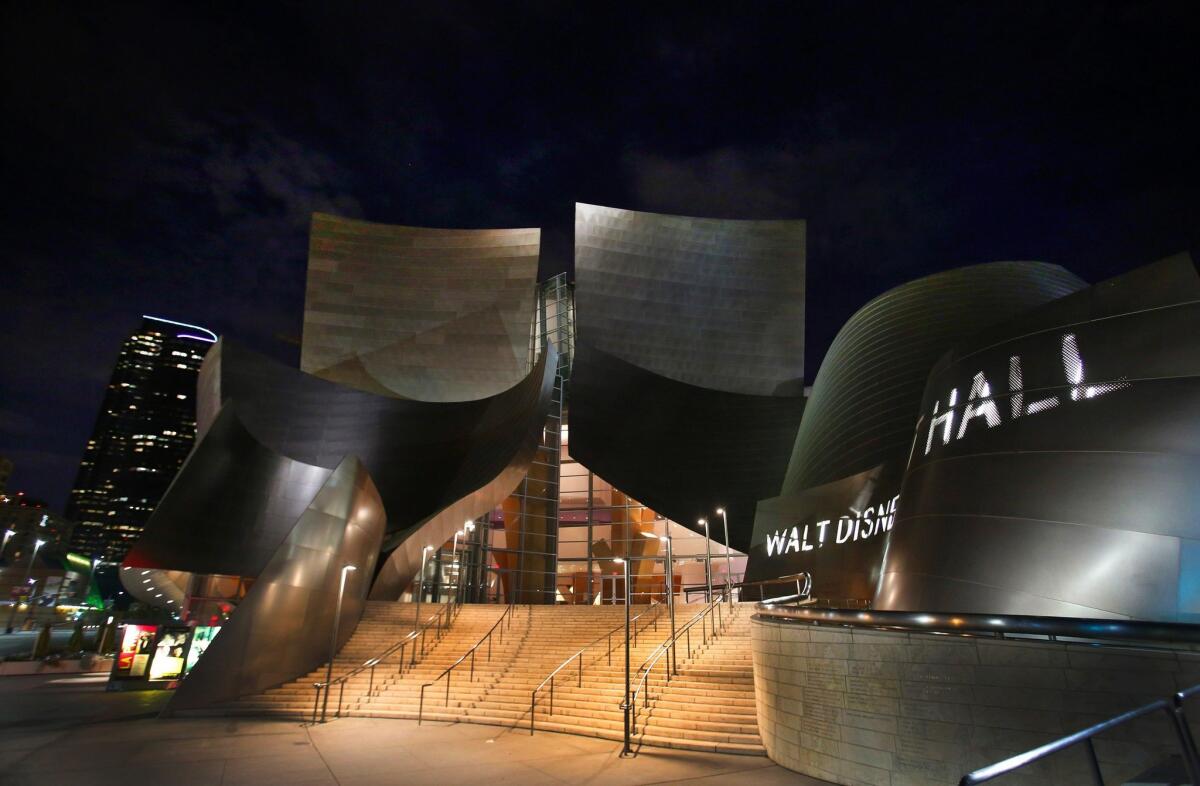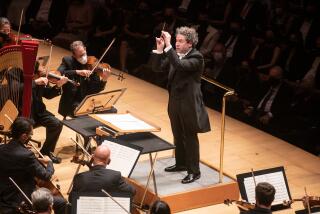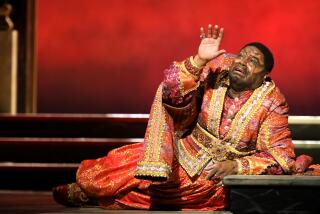Review: Neeme Jarvi leads L.A. Phil through Brahms, Suk’s rhapsodic Fantasie

A wag once said that Neeme Järvi seemed intent upon recording the Schwann catalog, which at the time meant everything in sight.
A glance at the veteran Estonian conductor’s voluminous repertoire indicates that the wag may not have been kidding.
If you ever wanted to sample the symphonies of Hugo Alfven, Niels Gade, Johan Halvorsen, Alexander Glazunov, Franz Schmidt, Wilhelm Stenhammar or Eduard Tubin, Järvi has a recording for you. Symphony cycles by the big names are in his catalog too -- Dvorák, Prokofiev, Shostakovich, Sibelius, Stravinsky, Tchaikovsky -- but sometimes peppered with bonuses like the original and rewritten versions of Prokofiev’s Fourth or the reconstruction of Tchaikovsky’s Seventh. And that barely scratches the surface.
So the intrepid classical music fan should expect out-of-the-way repertoire when Järvi comes to town, and he did provide some Friday, the first of three consecutive nights at Walt Disney Concert Hall. Sandwiched between a pair of Brahms standards was the Fantasie in G Minor for Violin and Orchestra by Josef Suk (1874-1935), the Czech composer and violinist who is known in this country, if at all, as Dvorák’s son-in-law.
The Los Angeles Philharmonic had never played the piece before, nor had the soloist, concertmaster Martin Chalifour, who nevertheless played it from memory with evident delight, emphatic attacks and a variety of veiled and outgoing timbres. What they revealed was a full-blown violin concerto in one movement that has nationalistic signatures yet with a different flavor than those of Dvorák.
Through its many sections, the Fantasie storms, rhapsodizes, references Brahms in a few passages and gives a virtuoso soloist -- and vicariously, the audience -- a gratifying workout. So why isn’t it better-known outside of the Czech Republic?
Perhaps it is because the piece falls short of genius-level inspiration, but you could say that about many other works that caught on internationally.
If anything, the Suk piece was a good stylistic match for the Brahms “Tragic Overture” that preceded it and the Symphony No. 4 that followed. Yes, Järvi recorded all of the Brahms symphonies about a quarter-century ago too, a so-so set (if memory serves) whose most memorable aspect was that each symphony was paired with a rare Schumann work.
Yet Järvi’s Brahms has grown into something special -- and different. The “Tragic Overture” was masterful, gorgeously and dramatically shaped even at the startlingly fast tempo that Järvi set, with a powerful, dark yet mobile sound that kept coming at you in surging waves.
Same thing with the Symphony No. 4. It moved at an exhilarating pace, yet there was nothing glib about it. The first movement was especially dynamic and driving, with Brahmsian gravitas and strong rhythm to support the racetrack tempos, the phrases questioning and answering each other.
Throughout the evening, the 77-year-old Järvi kept his motions to a minimum, harnessing the power of the L.A. Phil with a few sharp gestures, some seemingly offhand waves and shaky motions of the hands.
It was enough to get the points across.
More to Read
The biggest entertainment stories
Get our big stories about Hollywood, film, television, music, arts, culture and more right in your inbox as soon as they publish.
You may occasionally receive promotional content from the Los Angeles Times.






